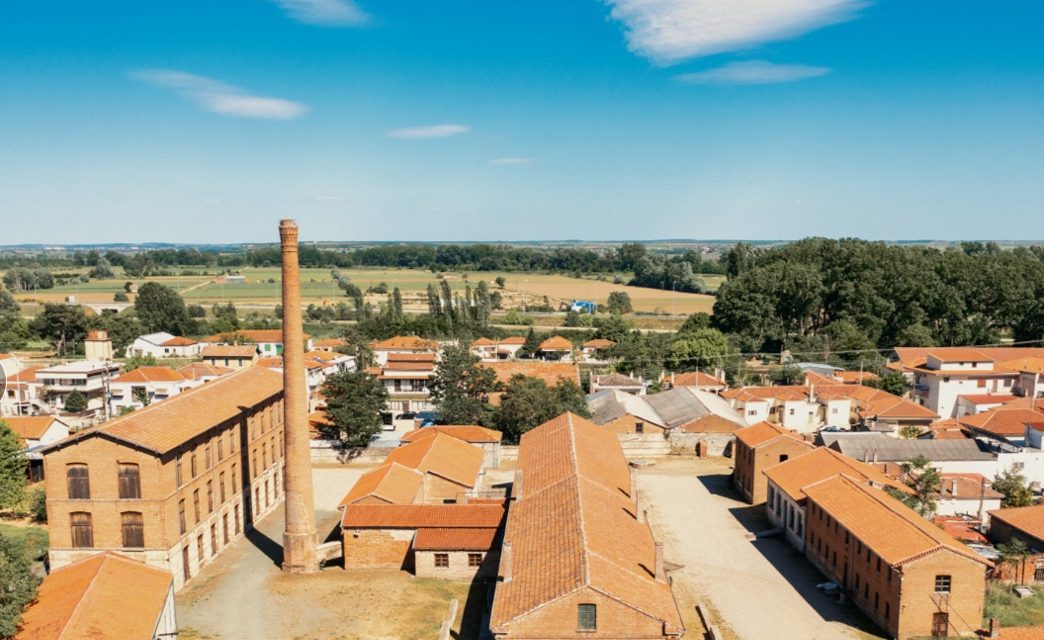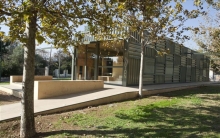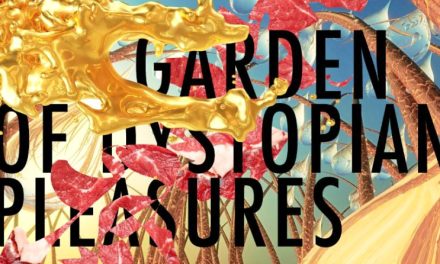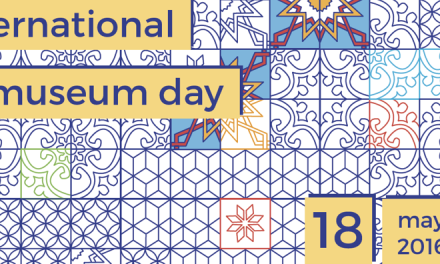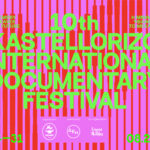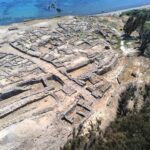Soufli is a village in the region of Evros in northeastern Greece, on the Greek-Turkish border. From the 19th century until the post-war period, Soufli was an important center of silk production exporting to Europe, especially to Lyon and Bordeaux or Milan, cities famous for their silk trade. This industry declined over time, but today the local administration is working to revive it, along with local craft production in general.
Silk making
Silk manufacturing is an extremely elaborate process that combines the wonders of nature with human genius. The breeding of the silkworm, which is in fact the caterpillar of the Bombyx mori moth (domestic silk moth), was once widespread in Europe. The oldest traces of silk, believed to date back more than 8,500 years, were found by a Chinese archaeological team at the excavation of the early Neolithic Jiahu burial sites. It wasn’t until the 6th century AD that the manufacturing technique is believed to have arrived in Mediterranean.
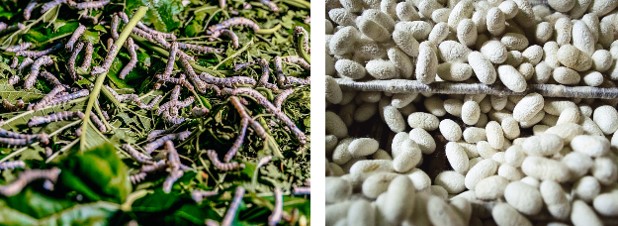
In the traditional sericulture and production of silk for weaving, farmers care for silkworms throughout their life cycle, cultivating mulberry trees that provide the leaves on which the worms feed to produce silkworm eggs. The fibers are extracted from the cocoons, spun into silk threads, cleaned and dyed. The yarns are then used to create various types of hand-made products, including fabrics, rugs, carpets and curtains.
Soufli, a major center of silk production
At the beginning of the 20th century, Soufli was a powerful economic, political and cultural hub on the banks of the Evros River, with a population of about 60,000. Its rapid development was owed to the sericulture industry, which was the region’s strongest asset for several decades. It was in that period that the Azaria & Pappo factory (1908), the Tzivre factory (1920) –the largest one in the area– and the P. Hadjisavva silk processing factory were established. The Tsiakiri factory, which still operates today, and the state factory were founded in 1954 and in 1967, respectively.
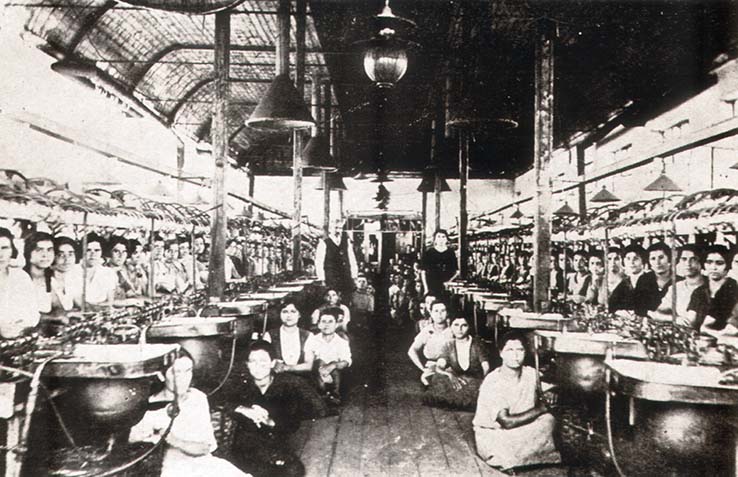
It is worth noting that this activity has deeply marked the architecture of the city: rearing silkworm lines for seed cocoon production was done in the farmers’ own houses, which were hence built using brick and stone in order to provide ventilation and the preserve the desired levels of temperature, humidity and daylight. Usually, the upper floors of the houses were reserved for silkworm rearing, giving the buildings the name “koukoulospita” from the Greek koukouli “cocoon” and spiti “house”.
After World War II, a boom in nylon and rayon production led to a downturn in the silk industry, and most silk mills in the area ceased operation. At present, there are 5 weaving and silk production workshops, as well as silk stores. In 1993, the production of cocoons amounted to 5,000 kg, compared to 800,000 kg in 1908.
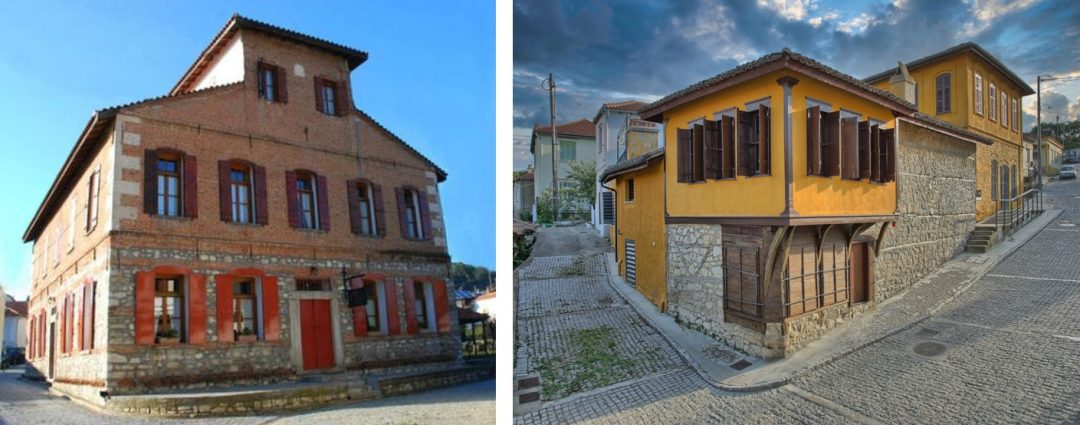
Despite the shrinking production, Soufli has been able to maintain its tradition. Over the past decade, the expansion of sustainable development policies and the shift back to natural fibers have benefited silk, which is increasingly featured in haute couture.
Between 2014 and 2017, the Fondation d’entreprise Hermès supported the work of La Soie des Hellènes, a not-for-profit association that works to revive the historic silk industry of Soufli to make pieces for the contemporary market. This involves reviving the cultivation of mulberry trees while respecting local biodiversity, passing on know-how to younger generations and modernizing some of the current equipment.
Alternative tourism in the region
Soufli and the wider region are also benefit from the renewed interest in silk tourism: as of 2017, Soufli is part of the Silk Road, an internationally renowned cultural tourism route –established by the World Tourism Organization (UNWTO)– that connects countries on what was, historically, the first global trade route, linking East and West. The current network carries on this tradition of cultural and economic exchanges, offering a “transnational tourism adventure”.
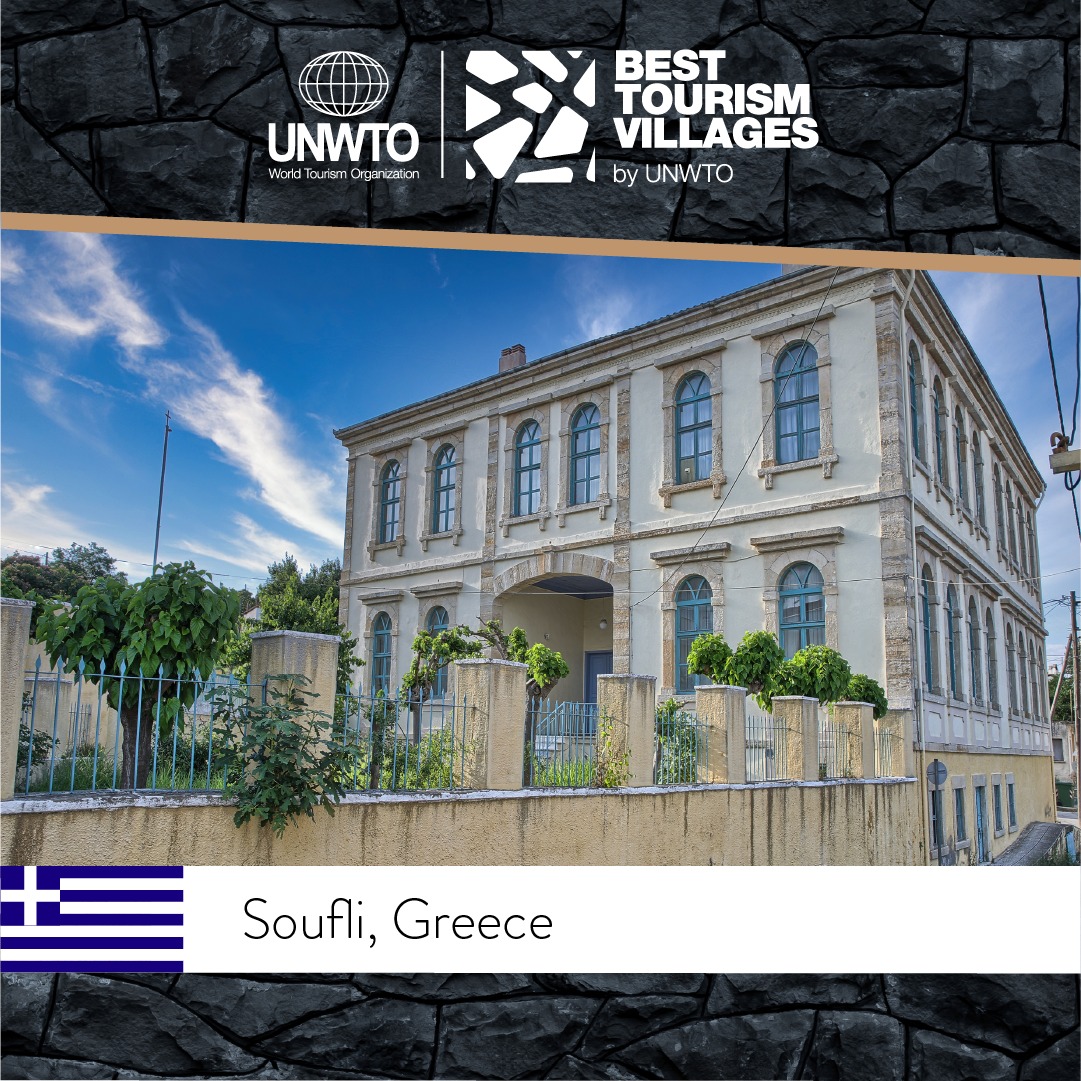
In 2021, Soufli was also included in the list of UNWTO’s Best Tourism Villages, a “global initiative to highlight those villages where tourism preserves cultures and traditions, celebrates diversity, provides opportunities and safeguards biodiversity”. Beside the “uniquely preserved in Europe” silk production tradition and the historical architecture of its “cocoon-houses”, Soufli also stood out for its proximity to the Dadia-Lefkimi-Soufli Forest National Park, one of the most important protected areas in Greece, which includes an impressive fossil forest, for its historical religious attractions, both Christian and Muslim, and for “keeping its authenticity”.
Soufli and the wider Evros region have great potential for the development of thematic tourism; as UNWTO notes, “Soufli keeps its authenticity and is not saturated by distorted forms of uncontrolled development. Thus, the possibility of formulating a viable proposal in the tourism sector is strongly justifiable”.
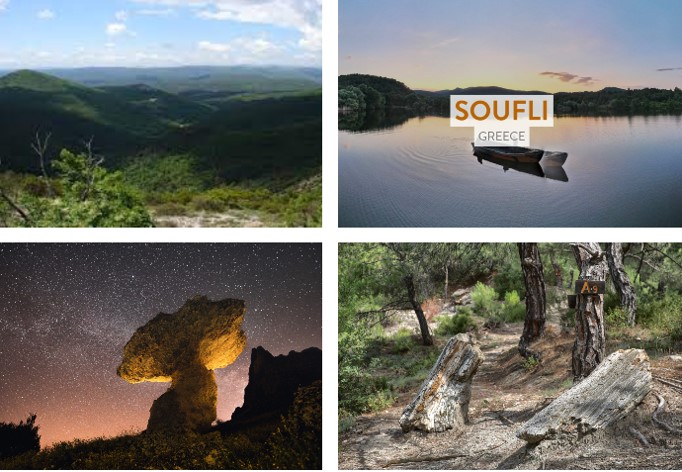
Promoting innovation in tourism development
Local authorities are taking advantage of funding opportunities offered by national and European programs to promote local tourism, for instance through the organization of festivals and exhibitions. Soufli has embraced innovation and a holistic approach to its promotion as a tourist destination, just as it does for its local production industry. All new projects and proposals all have an element of innovation, from the application of information technology to museum management to the use of virtual reality.
The museums of Soufli
The Silk Museum, managed by the Pireaus Bank Group Cultural Foundation (PIOP)
The permanent exhibition presents all the stages of pre-industrial sericulture and silk manufacture. It also traces the history of silk over time, focusing on how the town of Soufli became a major center of silk production from the late 19th to the mid-20th century.
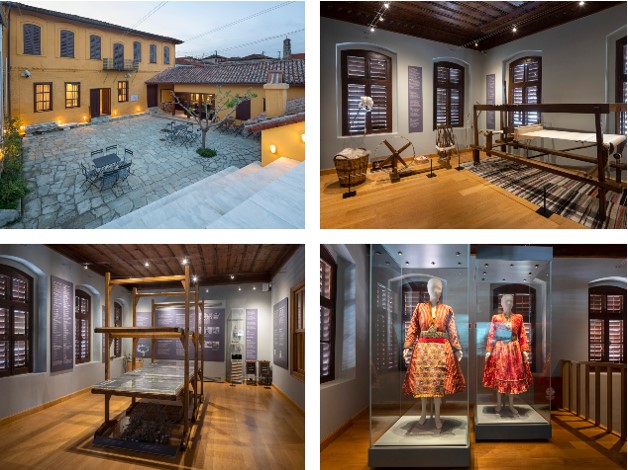
The Municipal Museum of Soufli
The Museum’s collections present the recent history of the village of Soufli as seen through the daily life of its citizens.
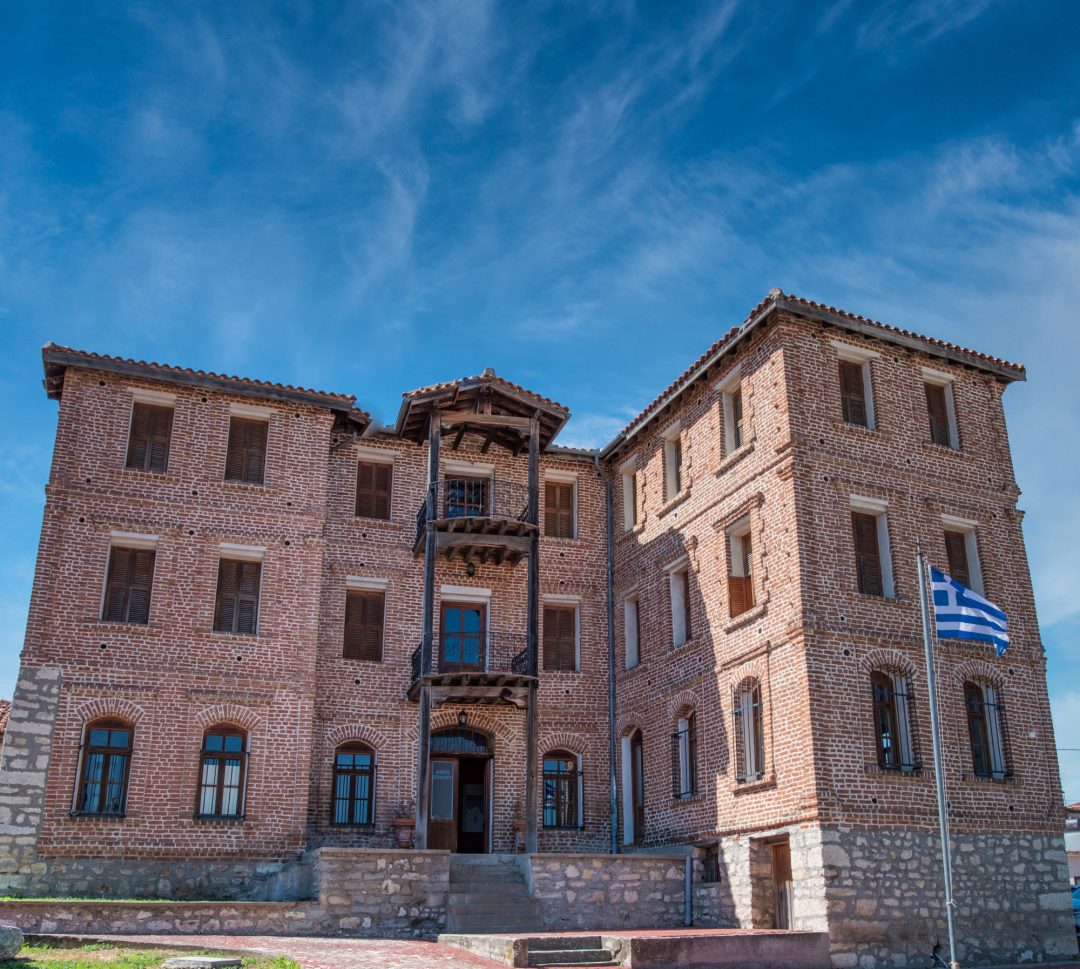
Soufli Folk Art Museum “Gnafala”
A remarkable collection of everyday objetcs, farming tools, ecclesiastical items, traditional local clothing, jewelry, and handicrafts of all kinds is on display.
The Tsiakiri Silk House, which has been producing and processing silk for 60 years, has created a multi-purpose space in the center of Soufli. Its objective is to highlight and preserve the rich tradition of sericulture.
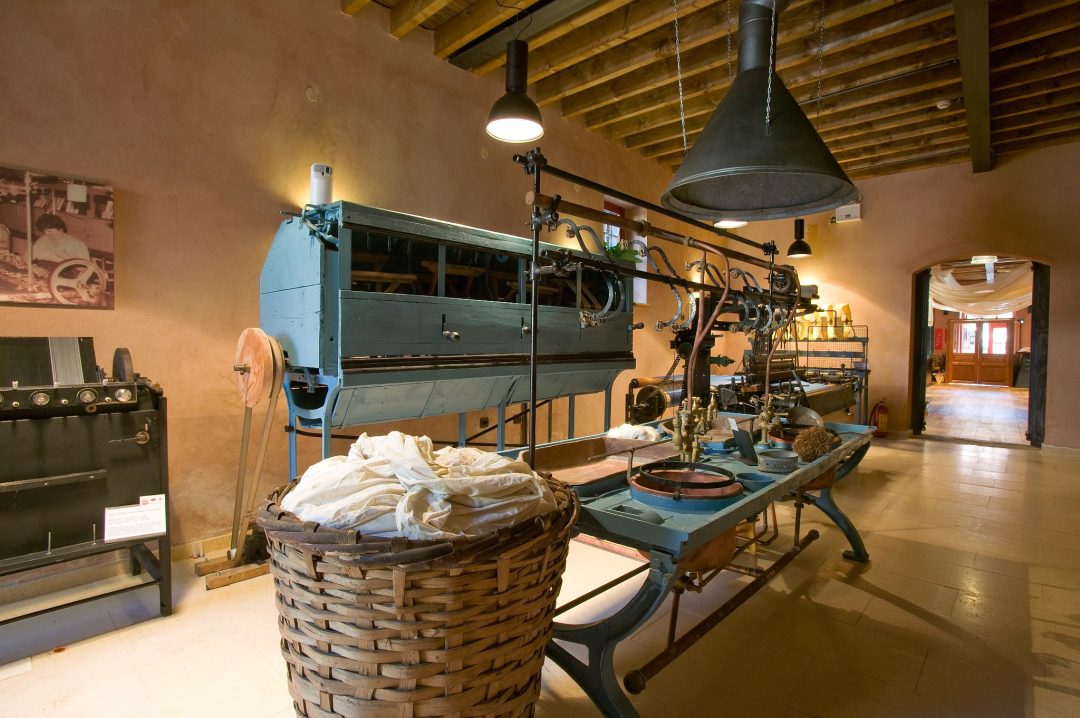
N.M. Translated from the original article which appeared on Grèce Hebdo (Intro image: The Tzivre factory; source: Municipality of Soufli official website)
TAGS: BUSINESS & TRADE | HERITAGE | TOURISM

